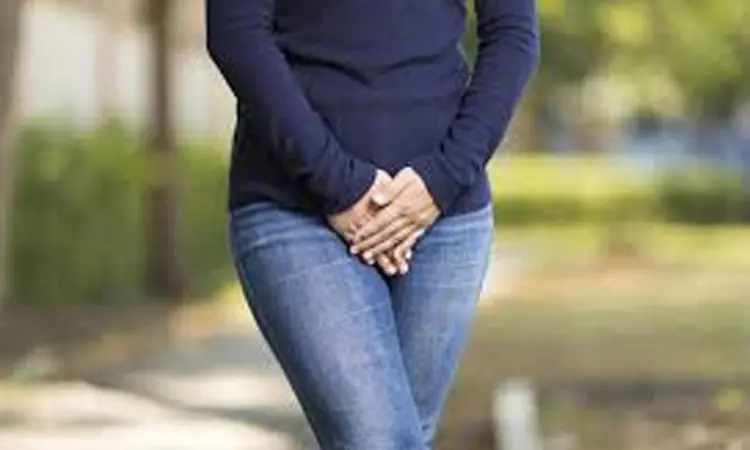- Home
- Medical news & Guidelines
- Anesthesiology
- Cardiology and CTVS
- Critical Care
- Dentistry
- Dermatology
- Diabetes and Endocrinology
- ENT
- Gastroenterology
- Medicine
- Nephrology
- Neurology
- Obstretics-Gynaecology
- Oncology
- Ophthalmology
- Orthopaedics
- Pediatrics-Neonatology
- Psychiatry
- Pulmonology
- Radiology
- Surgery
- Urology
- Laboratory Medicine
- Diet
- Nursing
- Paramedical
- Physiotherapy
- Health news
- Fact Check
- Bone Health Fact Check
- Brain Health Fact Check
- Cancer Related Fact Check
- Child Care Fact Check
- Dental and oral health fact check
- Diabetes and metabolic health fact check
- Diet and Nutrition Fact Check
- Eye and ENT Care Fact Check
- Fitness fact check
- Gut health fact check
- Heart health fact check
- Kidney health fact check
- Medical education fact check
- Men's health fact check
- Respiratory fact check
- Skin and hair care fact check
- Vaccine and Immunization fact check
- Women's health fact check
- AYUSH
- State News
- Andaman and Nicobar Islands
- Andhra Pradesh
- Arunachal Pradesh
- Assam
- Bihar
- Chandigarh
- Chattisgarh
- Dadra and Nagar Haveli
- Daman and Diu
- Delhi
- Goa
- Gujarat
- Haryana
- Himachal Pradesh
- Jammu & Kashmir
- Jharkhand
- Karnataka
- Kerala
- Ladakh
- Lakshadweep
- Madhya Pradesh
- Maharashtra
- Manipur
- Meghalaya
- Mizoram
- Nagaland
- Odisha
- Puducherry
- Punjab
- Rajasthan
- Sikkim
- Tamil Nadu
- Telangana
- Tripura
- Uttar Pradesh
- Uttrakhand
- West Bengal
- Medical Education
- Industry
Physical Therapy may effectively reduce Urinary Incontinence Symptoms in elderly females

Physical therapy interventions should be a first-line treatment intervention for elderly females with Urinary Incontinence, according to a new study.
Urinary incontinence (UI) is the involuntary loss of urine that is prevalent among older adults, particularly women. Since elderly women are too embarrassed to talk about their UI symptoms this may reduce their independence and quality of life, and even avoid social situations out of fear.
Physical therapy interventions effectively reduce urinary incontinence symptoms in older women and should be a first-line treatment intervention for patients with this chronic condition, according to a new study presented this week at the Association of Academic Physiatrists Annual Meeting in Orlando.
Physical therapy (PT) treatment interventions are available for UI, but how well do they work to relieve women's troubling symptoms? This systematic review examined the effectiveness of various conservative PT interventions to treat stress, urge and mixed urinary incontinence in older female patients, says Lauren Paretti, a student physical therapist at Misericordia University in Dallas, Pennsylvania, and one of the study's co-authors.
"After working with older adults in a variety of settings, we noticed that many females were concerned about urinary incontinence but were unaware that there are conservative treatment options for them that can be provided by physical therapists," says Paretti. "Much of the research on urinary incontinence has been reported on younger females. We were interested in discovering the most effective interventions to educate older females to help them with this issue."
The researchers performed three literature searches for published studies on stress, urge and mixed urinary incontinence in May 2019, September 2019 and January 2020. They evaluated article quality using standard evidence scales and then measured the outcomes of older women's UI symptoms after PT interventions with instruments like patient questionnaires, standard scales and/or bladder diaries. Fourteen scientific articles were included in the study's results.
PT interventions to manage UI symptoms, including pelvic muscle floor training, electrical stimulation, behavioral therapy, extracorporeal magnetic intervention, and physical activities were effective at reducing women's UI symptoms compared to control groups, the data showed. PT interventions should be offered to patients as first-line therapy as opposed to non-conservative methods, the researchers concluded.
"Physical therapy may be a viable option to help manage a complicated condition that often negatively impacts patients and their quality of life," says Paretti. "Physicians should refer to physical therapy as a conservative approach prior to medications or surgery."
Dr Kamal Kant Kohli-MBBS, DTCD- a chest specialist with more than 30 years of practice and a flair for writing clinical articles, Dr Kamal Kant Kohli joined Medical Dialogues as a Chief Editor of Medical News. Besides writing articles, as an editor, he proofreads and verifies all the medical content published on Medical Dialogues including those coming from journals, studies,medical conferences,guidelines etc. Email: drkohli@medicaldialogues.in. Contact no. 011-43720751


